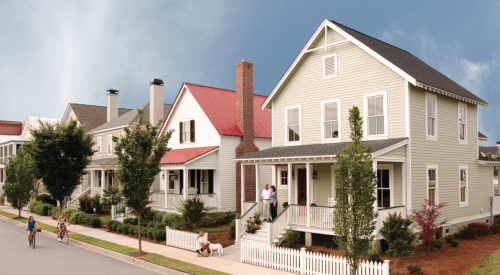Builders need to know how buyers think, but there's another set of people — government officials — who hold just as much clout in a project's life. Increasingly, those in the public sector are thinking of ways to fund major projects without raising taxes. And at any given moment, hundreds of them are in some stage of a public/private partnership.
Residential elements take a back seat to bigger-budget transportation and downtown redevelopment deals. But builders can take advantage of the best practices filtering into the industry from the National Council for Public-Private Partnerships and the Urban Land Institute, to the NAHB.
John Stainback, a Houston-based managing partner of Stainback Public/Private Real Estate (SPPRE), is involved with all three and consults with NAHB. His 17-step pre-development process shows what public officials are thinking, or should be, when approaching a partnership.
Working the stepsIf local officials are hitting on all cylinders, they will follow steps one through three to frame the project's overall idea; Steps 4 through 6 deal with research, planning and design; and Steps 7 and 8 cover budgeting and financial analysis. Note that Step 9 — construction phasing — is in blue, and has two-way arrows, or relationships, with Steps 4 and 6, because there's a feedback loop between these steps.
"The boxes are colored for a reason, and those arrows are deliberate, too," Stainback says. "In planning development, market demand analysis feeds the infrastructure plan, which in turn leads to a completed design. So Steps 4, 5 and 6 are blue. But so is Step 9, dealing with development phasing, because those earlier steps play a major role in phasing construction." Similar feedback loops exist between the green Steps 10 through 12 and subsequent steps, like Step 15, representing the contractual negotiations between builder and public partner. Where there are such relationships, some revisions are likely.
The Builder's RoleBuilders don't need a consultant to follow this or a similar process; most of these steps are part of the typical private development process. However, some call Stainback "after the vision, market study and often the design is done. That's typically for Steps 7 through 12, particularly 10," since public financing mechanisms are usually outside their core competency. In fact, most builders seeking public/private financial don't enter this process until the RFQ/RFP process begins in Step 14.
While that's common, it's not recommended, he says, because companies seeking an active, leadership role should get involved "as early as they can." These types of builders have been known to play a key role in the initial concept. A good reputation, local relationships and expertise can help builders from greenfield infrastructure to urban redevelopment plans.
Things can go wrong anywhere in the process. Stainback says Step 4 is "critically important" to both sides of the partnership. "Because without a good, thorough market analysis, everything after that point tends to be a little bit arbitrary and capricious." But there are local governments that skip the first 13 steps and "go straight to the private sector to see what kind of response they get." This is common with less experienced public officials that have a vision and a site in mind but lack the processes to follow for a successful project.
Now, builders can help them.












